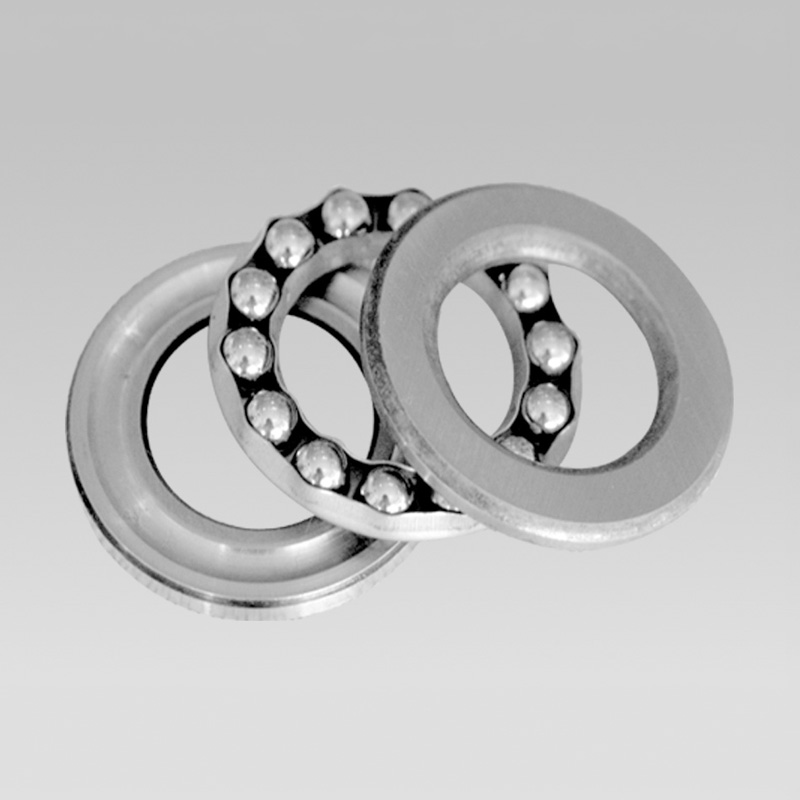
Oct . 02, 2025 13:35 Back to list
Thrust Ball Bearings: High Load, Low Friction, Sealed?
Axial loads, real talk: shop-floor notes on a precise little workhorse
If you spec thrust ball bearings all day, you already know the drill; if not, here’s the quick version. These bearings are purpose-built to carry axial loads—one direction or both—while tolerating a bit of radial load (though, to be honest, that extra radial component will create additional axial thrust and needs attention in the design).
I’ve seen them tucked inside vertical pumps, turntables, screw jacks, small gearboxes, even certain knife-gate valves. Many customers say they’re “simple,” yet the devil is in the details: steel cleanliness, heat treat, and raceway finish are what separate quiet uptime from noisy downtime.

Where they fit (and where they shine)
Typical applications: vertical motors and pumps, rotary index tables, slewing rings (as stack components), ball-screw support on light CNC axes, light marine drives, and compact geartrains. In fact, thrust ball bearings are often chosen when you want high axial stiffness with modest speed and the budget won’t stretch to angular-contact stacks.
Quick specification snapshot
| Parameter | Typical Range / Note |
|---|---|
| Series | Single-direction: 511xx, 512xx; Double-direction: 522xx, 523xx |
| Bore sizes | ≈10–200 mm (real-world supply may vary) |
| Materials | Rings/balls: GCr15 (100Cr6) bearing steel; cages: stamped steel or machined brass |
| Tolerance | ISO 492 P0/P6 (others on request) |
| Grease speed | ≈1,000–3,000 rpm depending on size/load |
| Operating temp | -20°C to 120°C (higher with special grease/steel) |
Manufacturing flow, testing, and standards
Process (simplified): steel verification → forging/turning → heat treatment (quench + temper, target HRC 60–64) → grinding/superfinishing (low Ra on raceways) → cage forming → cleanroom assembly → pre-lube (NLGI 2 lithium or ester grease) → marking → pack. Typical tests follow ISO 492 for dimensions, ISO 76/ISO 281 for load ratings and life, and vibration per manufacturer’s V1–V3 classes. Many buyers now ask for PPAP/IMDS for automotive or IATF 16949 alignment.
Field performance (example data)
Example: 51106 at 2,000 N axial load and 1,500 rpm, mineral grease, standard clearance. Calculated L10 life via ISO 281 suggests ≈12,000–18,000 hours; in practice, we’ve seen 10,000+ hours in clean service and as low as 6,000 with shock loads or misalignment. As always, alignment and filtration matter more than marketing.
What’s trending
- Cleaner steels and traceable heat lots for consistent NVH.
- Greases tuned for high-speed vertical pumps (lower churning).
- Counterfeit mitigation (QR traceability, laser ID).
- Sustainability: lighter cages, optimized race geometries to cut torque.
Vendor snapshot (buyer’s-eye view)
| Vendor | Certs | Lead Time | Customization | Typical Cost |
|---|---|---|---|---|
| ARY Bearing (Hebei, China) | ISO 9001; IATF 16949 support on request | ≈2–5 weeks | Cages, grease, tolerances, marking | $ (value-driven) |
| Global premium brand | ISO 9001/IATF 16949, full PPAP | ≈4–10 weeks | Extensive, including special steels | $$$ |
| Local trader (mixed origin) | Varies | Stock-dependent | Limited | $–$$ (variable) |
Customization and buying tips
- Choose cage: stamped steel (cost-effective) vs machined brass (stable at heat).
- Specify clearance and grease fill; vertical shafts often prefer lighter fill.
- Ask for batch hardness charts and raceway roughness (Ra) data.
- MOQ often around 200–500 sets; mixed sizes may be doable in practice.
Mini case: packaging line turntable
A food-packaging plant swapped legacy units for thrust ball bearings with brass cages and low-torque grease. Result (maintenance log): 18 months between interventions (≈35% improvement), cooler running by ≈6–8°C, and noticeably quieter starts. “We didn’t change the motor—only the bearing spec,” the supervisor told me, a bit surprised.
Why they’re picked
Advantages include compact axial capacity, simple assembly (shaft washer + housing washer + ball-cage set), and good price-to-performance. Limitations: sensitivity to misalignment, modest speed envelope, and additional axial thrust when radial loads are present—engineers, note your load paths.
Citations
- ISO 281: Rolling bearings — Dynamic load ratings and rating life. https://www.iso.org/standard/67678.html
- ISO 76: Rolling bearings — Static load ratings. https://www.iso.org/standard/65409.html
- ISO 492: Rolling bearings — Radial bearings — Tolerances. https://www.iso.org/standard/67661.html
- ASTM A485: Bearing-Quality Steel. https://www.astm.org/a0485_a0485m-14.html
- SKF Rolling Bearings Catalogue (authoritative reference data). https://www.skf.com/group/products/rolling-bearings
- IATF 16949: Automotive QMS. https://www.iatfglobaloversight.org/
Latest news
-
Everything You Need to Know About 6001 C3 Bearing – Specs, Uses, and Advantages
NewsNov.22,2025
-
6208 zz Bearing – Key Technical Insights, Applications & Vendor Comparison
NewsNov.22,2025
-
Everything You Need to Know About the 61906 Bearing | Features, Applications & Vendors
NewsNov.22,2025
-
Comprehensive Guide to 6201z 12.7 Bearing – Specs, Uses & Vendors | Ary Bearing
NewsNov.21,2025
-
Understanding the 6205 Bearing Size: Specs, Uses, and Global Impact
NewsNov.21,2025
-
Comprehensive Guide to 6211 Bearing Dimensions for Global Industrial Use
NewsNov.20,2025
